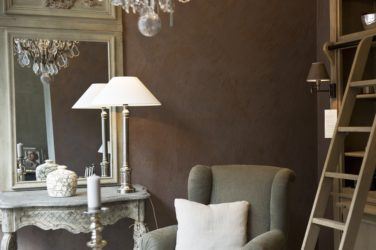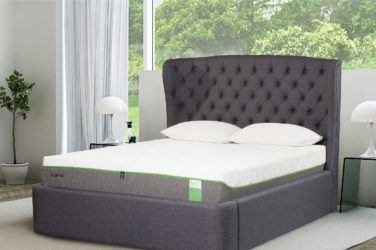For many of us, domestic space is just tighter these days, especially in urban settings. Setting up a living room in a small space can be particularly challenging because this space often does double or even triple duty – as family room, office, guest room, entertainment hub, library, or all of the above at once. Happily, there are new furnishings on the market that are sensitive to the scale and complexity of modern living. Some examples of these products, added to a few tried and true tricks from interior designers, make the case that no one needs to feel cramped when they come home at the end of the day.
How much furniture do you really need in a living room?
Can you live without a coffee table? What kinds of furniture do you really need and how many pieces? These are some of the questions to ask yourself while planning the layout of your living room. What will you be doing when you’re in your living room? If you spend time reading or watching movies, make sure the lighting and electronics are properly placed. If you frequently have friends over, consider whether extra seating can be occasionally commandeered from elsewhere in your home rather than cramming in extra permanent pieces. If possible, resist using furniture pieces just because you already have them. If you’re working with a small space, it should only contain the pieces that really work that you truly love.
Sofas
The sofa, of course, is the essential focal point of most living room design. Sofas and settees come is such a wide range of sizes and shapes that, with a little vision (and a lot of measuring), you should be able to find one with the right proportions for a smaller living room without sacrificing comfort.
Choosing a loveseat rather than a full on 3-seater is one strategy, but even in a small room you can play with scale. Not everything has to be diminutive, it’s the space around and between furnishings that needs consideration. So go ahead and get that large velvet modular number – just be aware that you’ll have to offset its large footprint by forgoing a coffee table or additional armchairs.
If your living room does double duty then so should your sofa. Happily, in response to the demand for smaller scale and multi-functional furniture pieces, manufacturers are getting creative.
 This sofa bed from Swoon Editions (from £799) has all the elegance and coolness of modern scandi design and converts into a bed big enough for two. We love the ocean blue wool version (shown here), but for less bold design schemes, the muted greys are beautiful too.
This sofa bed from Swoon Editions (from £799) has all the elegance and coolness of modern scandi design and converts into a bed big enough for two. We love the ocean blue wool version (shown here), but for less bold design schemes, the muted greys are beautiful too.
Living Room Storage
Storage is always an issue with smaller rooms, but eliminating clutter can help create what feels like a more expansive volume of space. Look for pieces with built-in storage potential – an ottoman with a hinged lid, a coffee table with drawers or extra shelves, built-ins or wall units with lots of room for books and electronics (and a means for concealing them perhaps).
 This Lapland grey storage stool from Maisons du Monde caught our eye – it’s in a cool muted grey and is the perfect hideaway for the guest duvet you realize you need when you have a sofa bed.
This Lapland grey storage stool from Maisons du Monde caught our eye – it’s in a cool muted grey and is the perfect hideaway for the guest duvet you realize you need when you have a sofa bed.
 And you know how we love clean lines and styling? This media unit (£399) has an understated mango wood finish, two shelves for the DVD player and set-top box, and a big cupboard to throw all your board games and junk in. In a a smaller space, keeping lines clean and junk hidden is the way to go.
And you know how we love clean lines and styling? This media unit (£399) has an understated mango wood finish, two shelves for the DVD player and set-top box, and a big cupboard to throw all your board games and junk in. In a a smaller space, keeping lines clean and junk hidden is the way to go.
Small-Space Tricks of the Trade
Interior designers have lots of tips for fooling the eye into thinking a room is larger than it actually is. Here are a few of the tried and true:
- Float furniture away from walls rather than lining everything against them. This will create volume around each piece and the illusion of a more spacious room.
- Keep your colour palette light and bright. Darker wall colour will automatically contract space and you want to open it up. Confine complex patterns to smaller accessories such as throw cushions.

- Adding mirrors also creates the illusion of more light and more room. Mirrors don’t need to be square and boring, by the way, even in small spaces. A round mirror like this Shoreditch one from Artisanti really makes a style statement and adds great depth to any room. Made from a recycled fir wood frame, it’s finished with an aged iron band running round the rim to add depth and a vintage, workshop feel. The perfect antidote to white walls, or the perfect match to bare brick.
- Unless you’re an expert at pattern mixing, try to streamline the number of colours and textures at play in a room; the objective is creating a room that can be “understood” at a glance. Clutter and complexity slow the eye and make things feel crowded. The classic white and maple wood Eames dining chairs in the photo are from the Conran Shop. Maisons du Monde have similar style chairs from £49.99 in a range of colours. We love the white and the grey/blue.

- Avoid table lamps and install light fixtures on walls and ceilings. Use pendant lamps (over a coffee table/ sofa combo perhaps?) to create a focal point to the room.
- Hang curtains high – close to the ceiling if possible. This will draw the eye upwards. Height is a great thing in a small room so if your ceilings are already high, rejoice. Make sure that draperies can be fully pulled away from windows to access light and sky.












Show Comments